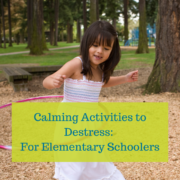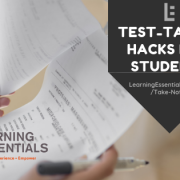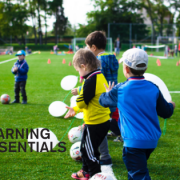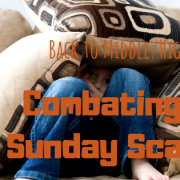Calming Activities to Destress: For Elementary Schoolers
Finding a sense of calm is likely difficult for kids right now, no matter their age. Our world as we know it has halted. It’s been replaced by what seems like one long, continuous day where there are few happenings that distinguish today from yesterday. It is disconcerting, to say the least. For children and teens, who typically find comfort in normalcy and routines, today’s upended society is even more jarring. Stress is inevitable right now, but there are ways to address it. Read on to browse our list of therapeutic and calming activities for children and teens.
Stress-relieving ideas for younger children
- Cursive writing is sadly a thing of the past—most elementary curricula do not include cursive writing or penmanship anymore. However, this downtime could be a blessing in disguise for children who are eager to learn to write in cursive. A quick Google search will provide parents with countless tracing templates, letter formation practice sheets, and lined handwriting pages for young kids to begin their work with cursive writing. Also, since cursive writing is not typically part of the elementary curriculum anymore, children won’t feel as though they are doing homework or schoolwork. Instead, they will see it as an optional “new” form of writing that they can practice as they please. Additionally, for students with various issues involving fine motor control, some parents find that cursive writing is actually easier for their child. The unbreaking, continuous movement of the pen or pencil connecting the letters is often less labor-intensive.
- Coloring books have experienced a major revival right now, especially since people are finding themselves with more leisure time. Coloring while listening to soothing music, like instrumental Disney songs, can be a great way for youngsters to pass the time and calm their minds. Better yet, there seems to be a coloring book for every interest, hobby, character, and theme! Coloring is something that the whole family can participate in together. When finished, display your children’s work around the house to showcase their artistic accomplishments!
- Jump roping and hula hooping are great rhythmic options for kids to embed some cardio into their day. These activities require coordination, concentration, and focus, so they are great for banishing stressful thoughts. You can also turn this practice into a challenge by setting a timer and having your child track his or her hula hoop skills! Just remember, the point of this activity is for your child to take his mind off of stressful thoughts, so if you notice him getting frustrated with the jump rope, it’s time to take a break!
- Blow bubbles as a mindful moment to practice deep, rhythmic breathing. Bubbles are an outdoor childhood favorite. Not only will young children admire the bubbles’ colorful iridescence, but watching them slowly float away is a calming activity while enjoying some fresh air. Blowing bubbles also provides an opportunity for children to practice mindful, meditative, deep breathing, which helps to reduce stress and bring peace of mind.
Read a book or listen to an audiobook on a rocking chair or porch swing. The consistent rocking back and forth helps to ease stress and relieve tension with soothing motion. There is something comforting about listening to an engaging story while gently rocking that can help center young children if they’re feeling exceptionally distressed.













